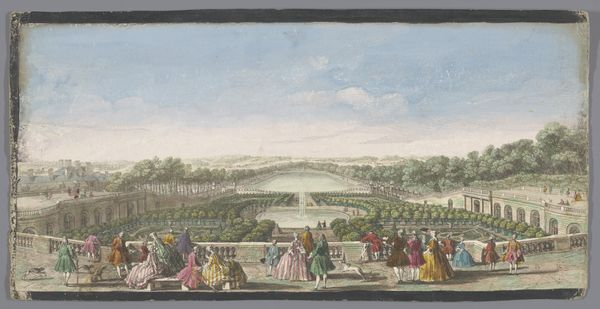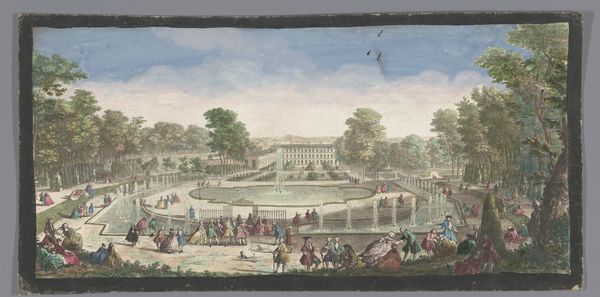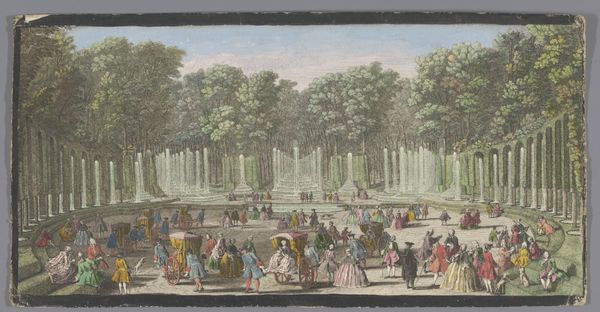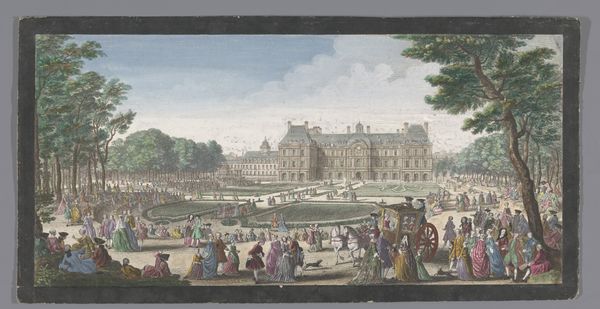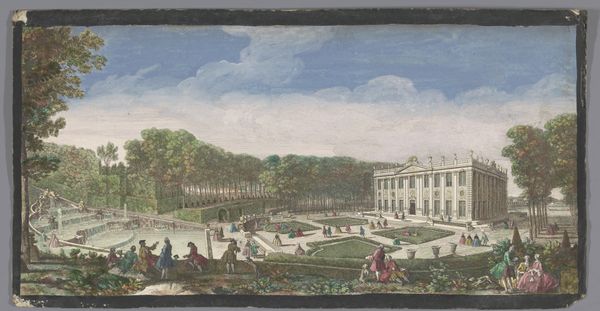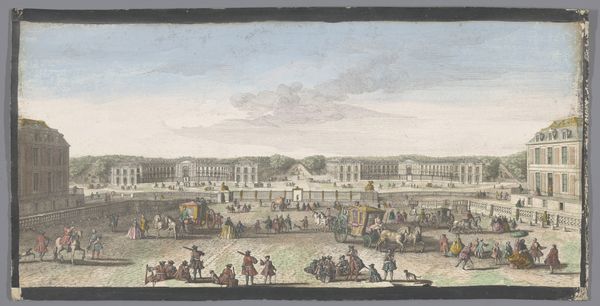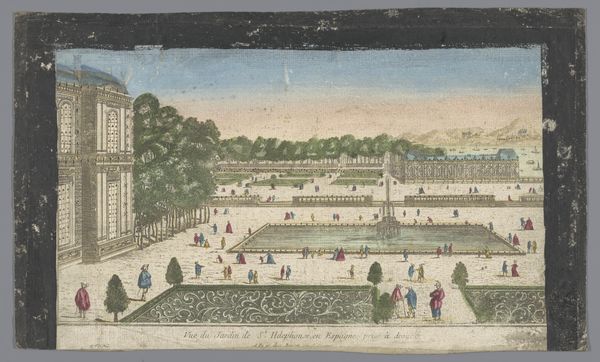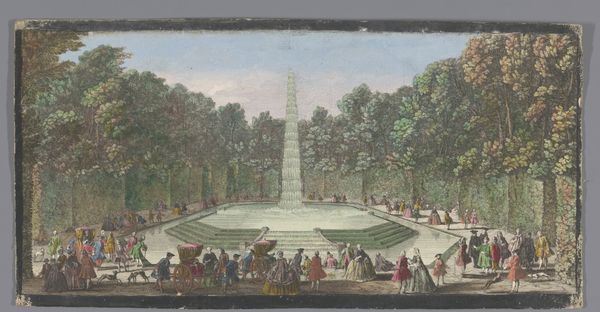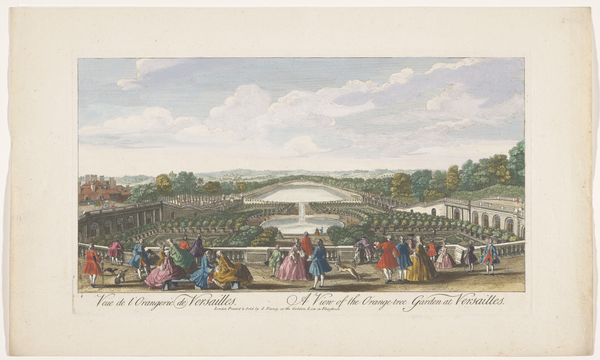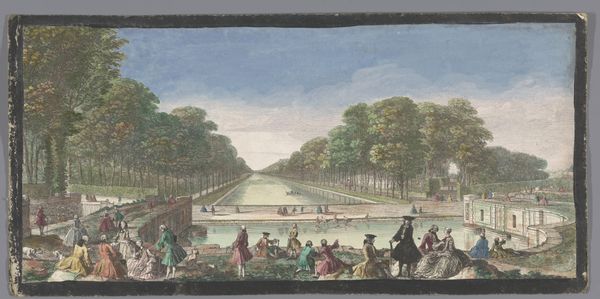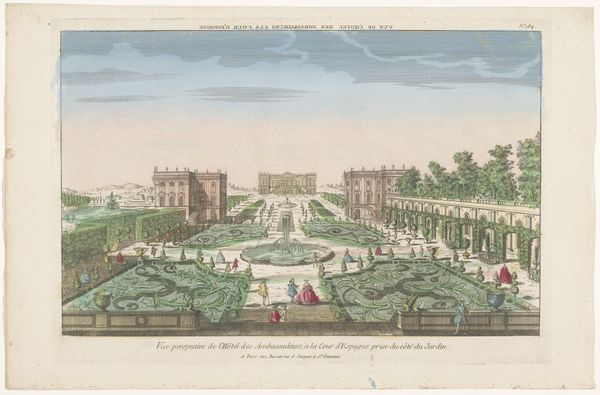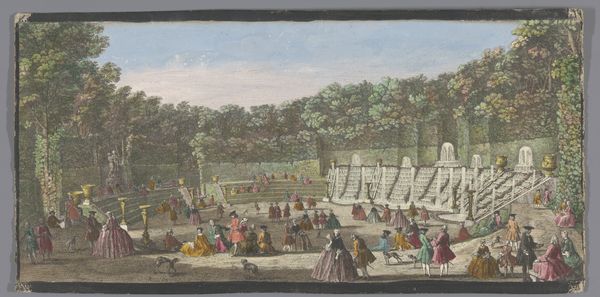
painting, watercolor
#
painting
#
landscape
#
watercolor
#
cityscape
#
genre-painting
#
rococo
Dimensions: height 239 mm, width 476 mm
Copyright: Rijks Museum: Open Domain
Editor: Here we have an 18th-century watercolor painting, "Gezicht op het Bassin de Latone in de Tuin van Versailles," from an anonymous artist in the Rijksmuseum collection. It's quite lovely. I am struck by the order, and almost theatrical, arrangement of the gardens and people. What’s your read on this scene? Curator: The scene represents more than just aesthetic preferences; it is a visual statement of power, control, and the strict social hierarchy that defined the era. The geometric perfection of the garden is, in itself, an assertion of human dominance over nature, mirroring the monarchy's dominion over its subjects. How do you see the figures fitting into this landscape? Editor: They seem like actors in a play, dressed to impress and conscious of their role within the court, each conforming to expectations, to gender roles, and even fashion trends. Curator: Precisely. Versailles was not just a palace but a carefully constructed stage for performing power. Notice how the fountain, a celebration of mythological power with Latona protecting her children, takes center stage. Can you see a possible critique in the artist's interpretation of this grand display? Is it simply a celebratory rendering, or could it subtly question the extravagance? Editor: I suppose it could be both. Perhaps the artist is neutrally documenting the lavish lifestyle, subtly inviting viewers to question its equity when considering broader social disparities. Or maybe this perspective is simply a 21st-century reading? Curator: Exactly! Our contemporary lens encourages such questions. By examining the work through feminist and class-conscious perspectives, we unveil complex dialogues about representation, privilege, and the unspoken stories of those excluded from this manicured paradise. It really underlines how much context shapes artistic intention and, more importantly, shapes our individual understandings. Editor: I now realize I had viewed the painting in a rather one-dimensional way, mostly drawn by the composition. You've helped me to view the gardens as an embodiment of cultural structures of power.
Comments
No comments
Be the first to comment and join the conversation on the ultimate creative platform.
